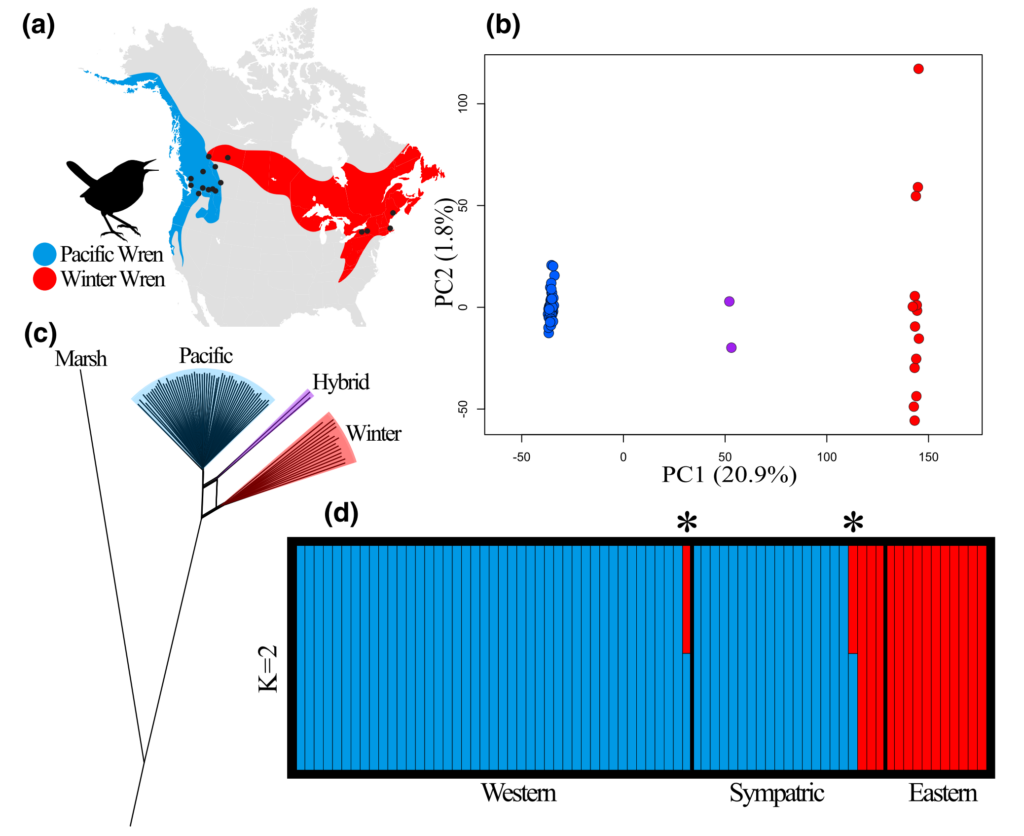Congratulations to Else Mikkelsen on the publication of her excellent Honours Thesis work on genomic differentiation between Pacific and Winter Wrens.

The full citation:
Mikkelsen, E.K., and D. Irwin. 2021. Ongoing production of low-fitness hybrids limits range overlap between divergent cryptic species. Molecular Ecology, online early view: https://doi.org/10.1111/mec.16015 .
The abstract:
Contact zones between recently diverged taxa provide opportunities to examine the causes of reproductive isolation and the processes that determine whether two species can coexist over a broad region. The Pacific wren (Troglodytes pacificus) and winter wren (Troglodytes hiemalis) are two morphologically similar songbirds that started diverging about 4 million years ago, older than most sister species pairs of temperate songbirds. The ranges of these species come into narrow contact in western Canada, where the two species remain distinct. To assess evidence for differentiation, hybridization and introgression in this system, we examined variation in over 250,000 single nucleotide polymorphism markers distributed across the genome. The two species formed highly divergent genetic clusters, consistent with long-term differentiation. In a set of 75 individuals, two first-generation hybrids (i.e., F1’s) were detected, indicating only moderate levels of assortative mating between these taxa. We found no recent backcrosses or other evidence of recent breeding success of F1’s, indicating very low or zero fitness of F1 hybrids. Examination of genomic variation shows evidence for only a single backcrossing event many generations ago. The moderate rate of hybridization combined with very low F1 hybrid fitness is expected to result in a population sink in the contact zone, largely explaining the narrow overlap of the two species. If such dynamics are common in nature, they could explain the narrow range overlap often observed between pairs of closely related species.
To read a Twitter thread about the paper, click here.
